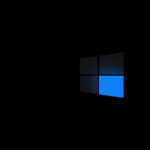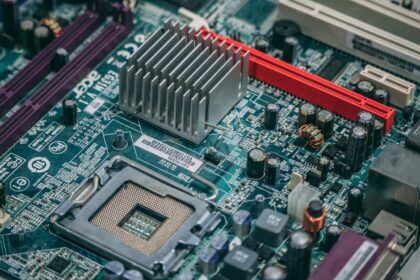AggregatorHost.exe is a native background process tied to the Windows Insider Program that helps gather feedback and telemetry data from test builds. It normally lives in C:WindowsSystem32 and carries a valid Microsoft digital signature, so finding it there usually means the file is legitimate.
The main purpose is simple: collect information that helps Microsoft Windows engineers test new features before a wider release. The file began appearing widely around 2021 and often runs quietly with no visible window, which is expected behavior for this type of component.
Security concerns arise when impostor programs copy the name to hide themselves. If the file sits outside the system folder or lacks a proper signature, treat it as a possible threat and inspect it.
Quick checks you can do now: open Task Manager to see path and usage, view Properties > Digital Signatures, and run a reputable scan. Later sections cover SFC, DISM, Defender scans, and safe removal steps.
What Is AggregatorHost.exe on Windows
Behind the scenes, a signed Microsoft component combines telemetry to make sense of scattered inputs. This microsoft aggregator host is a system process that pulls signals from different services so teams can test new features more efficiently.
A concise role inside the operating system
The host aggregates feedback and telemetry data, turning many small items into summarized insights. That lets components like Update and Security work with cleaner, combined reports instead of raw, scattered data.
Tied to the Windows Insider Program
Its main function supports preview builds. By collecting telemetry and user feedback from Insider builds, Microsoft Windows engineers can spot bugs, measure performance, and refine features before a broad release.
Where the legitimate file belongs and how it behaves
On a proper install the executable lives in C:WindowsSystem32 and carries a Microsoft digital signature. It usually runs without a visible window and uses minimal resources unless actively processing telemetry data.
Genuine component versus impostors
Security teams such as SpyShelter Labs noted the component widely since 2021, so its presence on modern systems is normal. Still, attackers may reuse the name to hide malware. The clearest red flags are a copy located outside System32 or a missing/broken signature.
- Quick check: confirm file path and signature to verify authenticity.
- Why it matters: telemetry helps Microsoft fix issues faster and validate security changes in controlled channels.
Is AggregatorHost.exe safe? How to verify the process and its publisher
Begin with a simple verification step: open Task Manager (Ctrl + Shift + Esc) and locate the target process. Right-click and choose Open file location to confirm the path. A genuine copy lives in C:WindowsSystem32.
Next, right-click the executable and open Properties. Check the Details and Version tabs for product info tied to Microsoft Windows. Then open the Digital Signatures tab to confirm a valid Microsoft Corporation signature and correct publisher name.
Compute or copy the file hash and submit it to VirusTotal for a multi-engine verdict. Run a targeted scan with Windows Defender and follow up with a second-opinion antivirus if results flag potential malware.
Monitor the process over time for CPU spikes, steady disk I/O, or odd network requests. Legitimate system processes usually have modest activity and no visible window. Note the file size and location; modern builds often show sizes near 235,520–240,128 bytes.
- Record path, signature, publisher, and hash results for future checks.
- If the path is outside System32 or the signature is missing, treat the file as suspicious and run a full scan.
| Check | Expected Result | Action if Different |
|---|---|---|
| Task Manager path | C:WindowsSystem32 | Open file location, then scan with Defender |
| Digital signature | Microsoft Corporation, valid | Do not trust; run hash check and antivirus scan |
| VirusTotal / hash | Clean or few low-risk flags | Investigate flagged engines and seek second opinion |
Fix issues with AggregatorHost.exe: performance, security, and when to disable it
If that process starts using lots of CPU, act quickly to limit impact and gather evidence. Start with simple, safe steps so you avoid accidental damage to the system.
Safely stop the process for troubleshooting
Open Task Manager, find the named process, and choose End task. This is safe for short-term testing and can confirm if the process causes the issue.
Check the file’s Properties and the file path afterward. Record any odd locations or missing signatures.
Repair core system integrity
Run an elevated Command Prompt and use sfc /scannow to repair corrupted operating system files. Follow with DISM.exe /Online /Cleanup-image /Restorehealth to restore the component store.
Remove unwanted programs and keep updates current
Audit installed programs and remove suspicious entries. Then run a full scan with Windows Defender or a trusted antivirus.
Create a restore point before major changes and keep the operating system updated. If issues persist, a reset that keeps personal files can return a clean state.
- Use Resource Monitor to map handles and network use.
- Review startup items via msconfig or Task Manager’s Startup tab.
- Keep backups and document any changes for the user or support staff.
| Check | Action | Command / Tool |
|---|---|---|
| High CPU from process | End task; monitor impact | Task Manager |
| Corrupt system files | Repair integrity | sfc /scannow + DISM |
| Suspicious programs or files | Uninstall and scan | Windows Defender / third‑party antivirus |
| Persistent instability | Backup and reset keeping files | Windows Reset / Restore Point |
For more troubleshooting tips and a community thread, see the detailed forum guide.
Conclusion
,In short, this signed system file typically does useful background work without troubling users. When the process sits in C:WindowsSystem32 with a trusted publisher and signature, it acts as a legitimate part of the operating system that collects telemetry data for the windows insider program.
If you spot odd behavior or a copy located elsewhere, treat it as a potential threat. Verify the path, check the publisher and signature, and hash the file if needed. Use Defender and the repair tools (SFC and DISM) to fix issues and remove suspicious programs.
Keep your software and security up to date, document the publisher, signature, size, and location, and contact support if unsure. For most users, the host process is harmless and helps microsoft aggregator host teams improve the system experience.
FAQ
What is the Microsoft Aggregator Host process and why does it run?
The Aggregator Host is a small component from Microsoft that collects feedback and telemetry for programs such as Windows Insider. Its role is to gather usage data and error reports to help engineers improve features and stability. The process usually runs in the background only when needed.
Where should the legitimate file be located and how can I confirm it?
A genuine copy appears in C:WindowsSystem32 and carries a valid Microsoft digital signature. You can right-click the file in File Explorer, open Properties, then view the Digital Signatures tab to confirm the publisher shows Microsoft Windows.
How can attackers try to disguise a malicious program as this host?
Threat actors sometimes use similar names or place copies in other folders to evade detection. Suspicious locations, missing signatures, or unusual file sizes are red flags. Always verify path and signature before trusting a process.
What should I do to check the process in Task Manager?
Open Task Manager, sort by name or CPU, and locate the process. Right-click it and choose “Open file location” to confirm the path. If the file isn’t in System32 or properties lack a Microsoft signature, treat it as suspect and scan it.
How do I check file Details, Version, and digital signatures?
In File Explorer, right-click the executable and select Properties. The Details tab shows version and product name; Digital Signatures lists the signer. A reliable Microsoft entry and matching version numbers support authenticity.
Can I validate the file with hashes or online scanners?
Yes. Generate a SHA-256 or MD5 hash with PowerShell, then search that hash on VirusTotal or similar services. Matches with known-good Microsoft hashes or clean scan results indicate a legitimate file.
Which antivirus tools should I use to scan the process?
Use Windows Defender or a reputable third-party antivirus such as Malwarebytes or Bitdefender. Run a full system scan and also submit the specific file for a targeted check if you suspect tampering.
How do I monitor behavior like CPU spikes or network activity?
Use Task Manager for CPU and memory, Resource Monitor for detailed disk and network use, and Performance Monitor for long-term trends. Unexpected sustained high CPU, frequent network connections, or repeated crashes warrant further investigation.
What steps help when the process causes high CPU or looks suspicious?
Safely end the process in Task Manager, note the file location, and run a full antivirus scan. If the file proves malicious, quarantine or remove it. Reboot and re-scan to ensure no related components persist.
How can I repair system files if corruption is suspected?
Run built-in tools: open an elevated Command Prompt or PowerShell and execute “sfc /scannow” to fix protected files. If issues remain, run “DISM /Online /Cleanup-Image /RestoreHealth” to repair the component store, then repeat SFC.
Should I ever disable the host permanently?
Disabling it isn’t usually necessary and may prevent feedback from reaching Microsoft. If you have privacy concerns, limit telemetry settings in Privacy & Security, or use Group Policy to reduce data collection rather than removing the component.
How can I remove unwanted programs related to suspicious behavior?
Use Settings > Apps to uninstall unfamiliar programs. Check startup entries via Task Manager, and remove autoruns with tools like Autoruns from Microsoft Sysinternals. After removal, run antivirus and reinstall any needed updates.
What ongoing practices reduce risk and keep systems healthy?
Keep Windows updated, enable reputable antivirus protection, review running processes periodically, and avoid downloading software from untrusted sources. Regular backups and cautious email handling also limit exposure to threats.
























